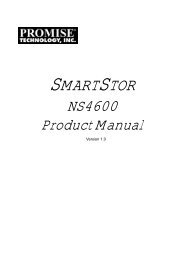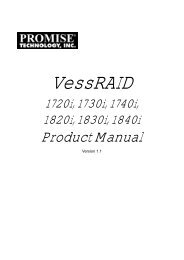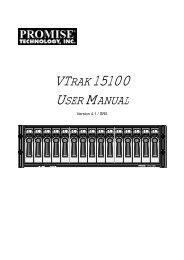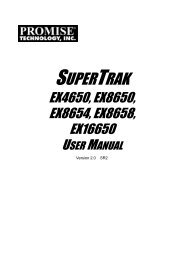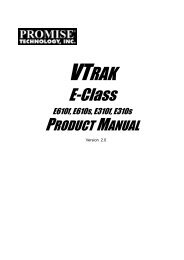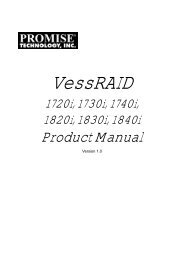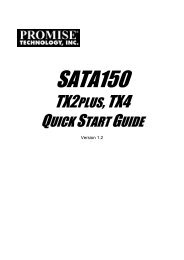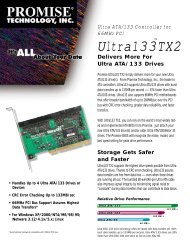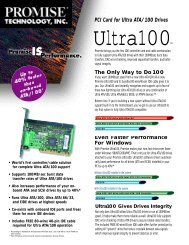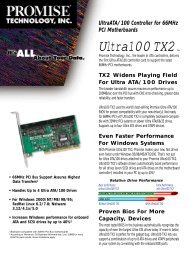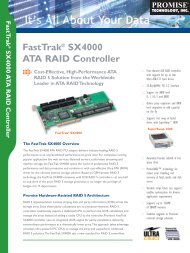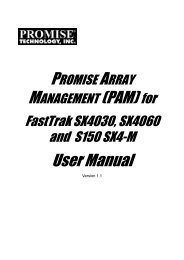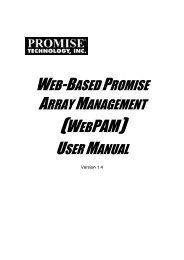WebPAM User v1.5 - Promise Technology, Inc.
WebPAM User v1.5 - Promise Technology, Inc.
WebPAM User v1.5 - Promise Technology, Inc.
You also want an ePaper? Increase the reach of your titles
YUMPU automatically turns print PDFs into web optimized ePapers that Google loves.
<strong>WebPAM</strong> <strong>User</strong> Manual<br />
RAID 5 – Block Striping with Distributed Parity<br />
RAID 5 organizes data across the disk drives of the logical drive, and stores<br />
parity information on to a disk drive dedicated to this purpose. This organization<br />
allows increased performance by accessing multiple disk drives simultaneously<br />
for each operation, as well as fault tolerance by providing parity data. In the event<br />
of a disk drive failure, data can be re-calculated by the RAID system based on the<br />
remaining data and the parity information.<br />
Parity data is distributed across the disk drives along with the data blocks. In<br />
each case, the parity data is stored on a different disk than its corresponding data<br />
block.<br />
RAID 5 makes efficient use of hard drives and is the most versatile RAID Level. It<br />
works well for file, database, application and web servers.<br />
Data<br />
Blocks<br />
Distributed Parity<br />
Disk Drives<br />
Figure 3. RAID 5 Stripes all drives with data and parity information<br />
The capacity of a RAID 5 logical drive is the smallest disk drive size multiplied by<br />
the number of disk drives, less one. Hence, a RAID 5 logical drive with four 100<br />
GB disk drives will have a capacity of 300 GB. A logical drive with two 120 GB<br />
disk drives and one 100 GB disk drive will have a capacity of 200 GB.<br />
RAID 5 logical drives on FastTrak consist of 3 or 4 disk drives.<br />
92



